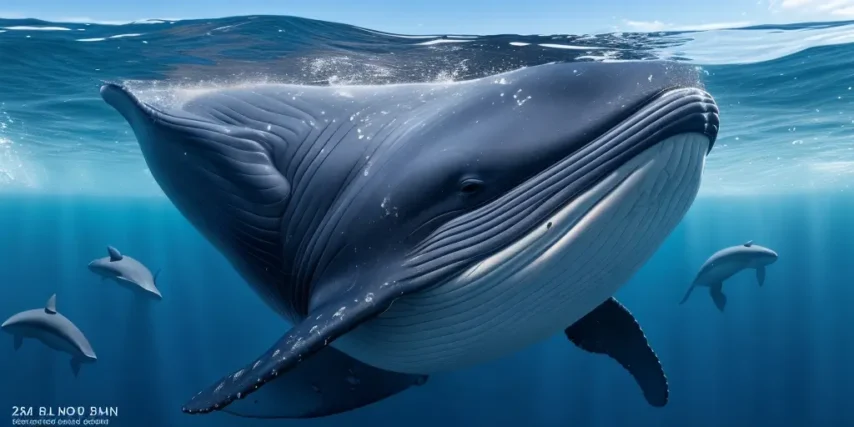Giants of the Deep: Unveiling the Majesty of the Largest Whales
The world’s oceans, vast and mysterious, harbor creatures of extraordinary size and beauty. Among these awe-inspiring beings, whales reign supreme as the largest mammals on Earth. These majestic marine giants, with their colossal sizes and captivating behaviors, have long captured the fascination of scientists, conservationists, and nature enthusiasts alike. In this exploration, we delve into the depths of the ocean to unveil the largest whale sizes and uncover the astonishing world of these magnificent creatures.
The Blue Whale: The True Titan of the Seas
When it comes to sheer size, the Blue Whale (Balaenoptera musculus) stands as an unrivaled giant. As the largest animal on the planet, these majestic beings can reach lengths of up to 100 feet (30 meters) and weigh an astonishing 200 tons or more. To put this into perspective, the heart of a blue whale alone can be as large as a small car, highlighting the immense scale of these oceanic leviathans.
Blue whales are filter feeders, primarily consuming small shrimp-like animals known as krill. Despite their colossal size, these gentle giants glide through the water with astonishing grace, utilizing their baleen plates to filter massive amounts of water and extract the nutritious krill. The hauntingly beautiful songs of male blue whales can be heard across great distances in the ocean, serving as a means of communication during the mating season.

The Fin Whale: Second in Size, First in Elegance
While the Blue Whale claims the title of the largest whale, the Fin Whale (Balaenoptera physalus) isn’t far behind. Reaching lengths of around 85 feet (26 meters) and weighing up to 80 tons, fin whales are sleek, streamlined creatures with distinctive asymmetrical coloring on their lower jaw. Known as the “greyhounds of the sea,” these whales are remarkable for their incredible speed, capable of reaching up to 25 miles per hour.
Fin whales, like their larger counterparts, are filter feeders, and their diet primarily consists of small schooling fish and krill. Their enormous size, combined with their graceful movements, make them a breathtaking sight for anyone lucky enough to witness them in their natural habitat.
The Humpback Whale: A Tale of Tails and Songs
Humpback whales (Megaptera novaeangliae) may not surpass the blue and fin whales in sheer size, but they are renowned for their acrobatic displays and enchanting songs. Adult humpbacks typically measure between 40 to 50 feet (12 to 16 meters) in length and weigh around 30 tons. What sets them apart, however, is their long pectoral fins, distinctive knobbly head, and intricate black-and-white markings on their tails, known as flukes.
Humpback whales are famous for their complex and haunting songs, which can last for up to 20 minutes. These vocalizations are believed to play a crucial role in mating rituals and communication among members of the same pod. Additionally, humpbacks are known for their breaching behavior, leaping out of the water and slapping their tails on the surface in a display of sheer power and agility.

The Sperm Whale: Deep Diver Extraordinaire
While not the largest in terms of length, the Sperm Whale (Physeter macrocephalus) holds its own as the largest toothed whale and is celebrated for its remarkable diving abilities. Adult male sperm whales can reach lengths of up to 67 feet (20 meters) and weigh around 50 tons, with females being slightly smaller.
Sperm whales are known for their iconic square-shaped heads and powerful tails. These deep-sea divers can plunge to incredible depths in search of their preferred prey—giant squid. Remarkably, they can descend to depths of over 10,000 feet (3,000 meters) and hold their breath for up to two hours, making them one of the most extraordinary divers in the marine world.
The Gray Whale: A Journey Across Oceans
Unlike the open-ocean giants, the Gray Whale (Eschrichtius robustus) is known for its coastal migrations. While not the largest whale species, adult gray whales can still reach lengths of 45 feet (14 meters) and weigh up to 40 tons. These whales are recognized for their mottled gray coloration and distinctive heart-shaped blow.

Gray whales embark on one of the longest migrations of any mammal, traveling thousands of miles between their feeding grounds in the Arctic and their breeding and calving lagoons in Baja California, Mexico. This incredible journey, often observed by avid whale-watchers, showcases the resilience and determination of these remarkable creatures.
Conclusion:
In the vast expanse of the world’s oceans, whales stand as living monuments to the wonders of marine life. From the colossal blue whale to the acrobatic humpback, each species brings its own unique charm and significance to the underwater realm. As we continue to explore and understand these magnificent creatures, their conservation becomes increasingly crucial. By appreciating the largest whales for the marvels they are, we can work together to ensure that future generations can share in the wonder of these gentle giants. So, let us marvel at the giants of the deep, and strive to protect their oceanic habitats for the sake of our planet and the extraordinary creatures that call it home.







